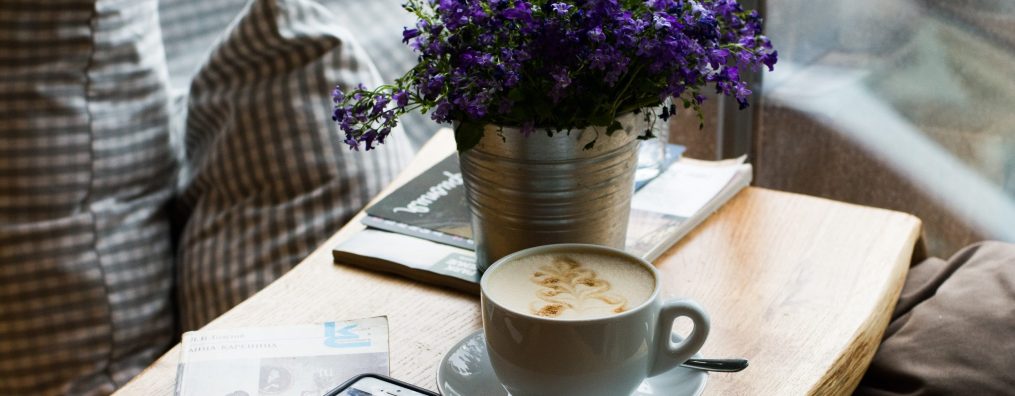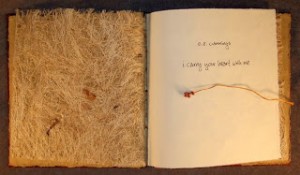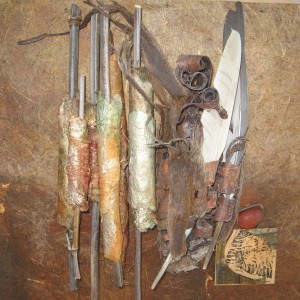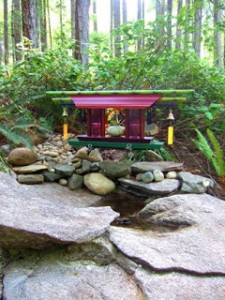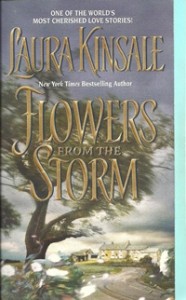After seven long weeks in a small rural island community over the summer, the past week was spent on a quick return trip to the city, ostensibly to attend a friend’s wedding, but also to take care of a hectic round of shopping and errands in preparation for the start of the school year. The experience was so overwhelmingly busy and exhausting that I didn’t even open my laptop, let alone have time to sit and write a blog post. I did have a few ideas, but they were swept from my head as quickly as they settled there (thus the dead air space here.)

TOWN MOUSE VERSUS COUNTRY MOUSE
The one idea that has stayed with me throughout is the contrasts, naturally enough, between city and country living, which brought to mind the moral tale of Aesop’s fable, The Town Mouse and the Country Mouse. For those that need a quick refresher, in the original fable, a sophisticated city mouse visits his friend/cousin in the country and partakes of a rustic meal, which is not to his taste. Boastful of the benefits of urban living, he invites his country cousin to the city to enjoy its opulent pleasures, and once there, their sumptuous meal is interrupted by dogs, who give chase. Escaping, the country mouse returns home, concluding that he prefers the peace and security of the country to the stresses of the city. After the past week, I can surely relate.
CITY LIFE
My first foray into academic specialization was in fact as an urbanist – I studied urban geography and sociology as an undergraduate. As such, I studied the origin of cities and towns, their patterns of growth, land uses, and the behavior and artifacts of urban dwellers. Clearly it is no surprise that people first came together to live in numbers, and behind walls, for reasons of safety (a reason which is not so true of today’s cities) and of course to conduct commerce (more true than ever), and I suppose for society, although that perhaps was an offshoot of the cities themselves. The more people and activity there was in cities, the more needs for goods and services emerged, as well as the maintenance of infrastructure, and so of course cities also became the place one went in search of employment. Not surprisingly, my undergraduate studies corresponded with my early twenties, and a move from a smaller city to a large city with a university, and a stage of life that was stimulus-seeking. The city had great appeal, both in theoretical and in real senses. I think that the city really is the environment best suited to the stretching, shaping and testing of young minds, not unlike the tempering of iron on a hot forge.

Map of Old Florence
DIVERSITY AND CULTURE
As cities emerged, with large concentrations of people, they came to represent not only population density, but population diversity (for of course people came from far and wide, and cities have always been magnets for immigration, where newcomers to a country can always find like-others to support them and their transition to a new place.) People brought with them their various ways, including skills, food, language, music, religions, costumes and culture. And so anyone living in a city was much more likely to be exposed to this diversity and its corresponding excitement as well as the cross-fertilization that results. Large numbers and varieties of people living together and conducting business also leads to new experiences that we associate with urban living today: fine dining, great shopping and the arts (music, theatre, galleries, museums, educational opportunities, culture, and of course the political life that urban living of necessity engenders). These things become objects and industries in themselves which are self-perpetuating, leading to the kinds of innovation that we associate with cities.
GROWING OLD ALONE
Skipping over a career as an architect, the next opportunity I had to think deeply about city life versus country life came in my iteration as a Gerontologist, during which time I had the chance to design and teach a graduate class in Rural Aging. Despite decades of urbanization, there are and will always be some people who live in rural and agrarian settings. And eventually these people grow old and frail. In brief, the two principal challenges of growing old in a rural setting are transportation and isolation. For these reasons, housing options for older people are better when they are clustered and closer to services and supports. Around the same time I was inspired by some of research being done by some Dutch colleagues that involved surveying and layered mapping (via GPS) of self-selecting (by choice or default) aging populations in city neighbourhoods, appropriate housing, services, and nodes and pathways, both concrete and imagined. I was unsuccessful at that time in securing funding to replicate that research in a Canadian context, but I was a great believer at that time that growing older in a supportive community-integrated (as opposed to a segregated designed institutional) setting was the way to go. I guess I still do.
 SUPER-MOM, ANYONE?
SUPER-MOM, ANYONE?
The two roles I’ve adopted since those days that affect my views on urban versus rural living are important ones: that of parent and of writer. Interestingly, in retrospect (as I now have a teenager) I think raising children in a rural or small town setting makes much more sense. Not only is it less expensive, but the two aspects of parenting in the city that loomed large in my experience were Programming and Chauffeuring, both of which are related to the real and perceived risks (as well as the real or perceived opportunities) of modern urban living. Both of which suck up a great deal of time, energy and resources. And despite the enviable way that some mythical parents seem to do their job, my life never afforded the time, energy or inclination to partake of those benefits of the city, such as fine dining, fashionable shopping or engaging in arts and culture, for myself or my child.
For me, as I think it does for most, family life revolved around mac and cheese and chicken fingers, soccer and piano lessons, and suburban mall outlets like Gap, Old Navy and The Bay, from which a never-ending succession of shorts and shoes and socks in larger and larger sizes must be procured. The few times my husband and I attempted to hang on to our previous, child-free, yuppie lifestyle, by finding and paying for an expensive babysitter and attending the symphony or theatre, and going to a nice restaurant, we invariably talked wistfully about our son all evening and fell asleep halfway through the performance. Why not just embrace the fact of your stage of life and make it easier on everyone? Forget about fashion, fine dining and fine art for a few years and give yourself a break. Let the kids climb trees and run barefoot in a field, let them have rabbits, and don’t even think about the spit up or spaghetti sauce on your smock. Everyone will be much happier and healthier, trust me.

George Bernard Shaw in his writing shack
PEACE AND SOLITUDE
As a writer, of course there are some benefits to urban living, such as education, support groups and writers’ conferences, but really most of these benefits can be realized on-line these days, and in fact most of them are (except conferences, but then why not take a trip once or twice a year?) The things that busy urban life do NOT provide very well are peace and solitude: two things that writers need in large measure. This is likely why writers have traditionally taken retreats, or rented seaside cottages or secluded cabins in the woods. So they can actually get the writing done!
As we head into the last week of summer vacation, and I’m back in the country, I almost dread the ultimate return to the city for the start of the school year. This summer hasn’t been a very productive one for me as a writer (other than blogging), as there have been other, more pressing issues, such as my health, to deal with. But still I can imagine how much I could get done if only I could stay. I can almost see myself going for solitary rural walks, watching the trees turn colours overhead, and breathing the bracing fresh country air as I prepare for long fall days bent over the computer, fire crackling, funneling my creative energy into my writing and editing.

ASIDE: In my meanderings I found this lovely essay by Tom Hanks in the NYT Sunday Review about his love and obsession with typewriters. Read it and smile, and tell me you don’t want to run out and buy an old typewriter.
BALANCING THE BEST OF BOTH WORLDS?
Instead, I’ll be heading back to the hectic, highly scheduled, socially demanding, time-gobbling, over-stimulating urban environment that always seems to act in opposition to those things that best serve my writing. Peace and solitude. I’m wondering if there is a way to have the best of both. Of somehow enjoying the best that the city has to offer, and still hanging on to the lifestyle that nurtures and supports my energy, my health and my writing. As I grow older, I think that there may in fact be benefits to growing older in the country. At a certain age we have accumulated enough experiences, have tempered our inner steel sufficiently, and have tired of the stimulation. In other words, we’ve been there, done that. Now it’s time for rest and reflection. Attributes that serve the writer well. But of course, one cannot reflect upon that which one has not experienced. So a time for every season, as they say.
Being a late bloomer in so many ways, by the time I have the freedom to retire to the country to pursue the quiet, solitary lifestyle of a (rural) writer, I’ll be too old and feeble to drive a car or carry my groceries, and then I’ll have to start looking for a supportive urban neighbourhood to make my elder years tolerable.
So what are you? A town mouse or a country mouse, and why? What stage of life are you in and what about your environment makes that better or worse? And finally, do you own a typewriter?
